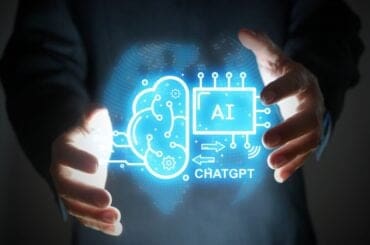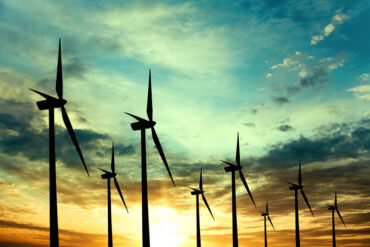
The smart orchestration of data through computational technology, geolocation location devices, remote sensors, advanced autonomous imagery, and other technologies offers humans hope of food security.
Ending hunger is the second of the UN’s 17 Sustainable Development Goals to achieve by 2030, yet mankind is facing an unprecedented food supply crisis.
The statistics are alarming. Food insecurity has doubled in the past two years, food prices are soaring, and the World Food Programme estimates 45 million people are currently on the brink of famine. Back in 2021, the UN estimated that 800 million people were already living with hunger. That figure is higher today and looks even bleaker when we factor in the anticipated growth in the world population from 8 to 10 billion people by 2050.
Add in the current supply chain issues impacting the food cycle from end-to-end, the war in Europe’s “Bread Basket,” which has increased pressure on the global wheat market and caused the price of oil and gas to surge, and things seem more dire. However, we believe it is even more critical that we embrace, invest, and deploy innovative technology to deliver the only results that matter: sustainable food supplies to feed everyone.
The ingenuity of solutions now being deployed by Digital Agritech to overcome a myriad of problems continues to inspire us. In 2021 we described how automation and innovation “agri-technologies” were being used to boost crop yield, reduce cost and improve the safety and working conditions of farmworkers. Thinking creatively has become essential to overcome seismic problems such as the spiraling cost of raw materials (e.g., fuel, seed, and fertilizer) and the financing of the replacement of antiquated equipment.
See also: The Path Towards Efficient, Profitable, and Safe Autonomous Agriculture
Technology can deliver food security
Thankfully technology provides hope. Recent advances in Artificial Intelligence (AI)/Machine Learning (ML), automation, and robotics are helping the modern-day farmer overcome many of these challenges. Agriculture continues to transform itself and deliver efficiency improvements through forward-thinking experimentation and innovation. Here we dive into four exciting fields where technology provides this hope and examples of real and valuable progress.
1) Harnessing all available data to find actionable insights
More ambitious use of AI, intelligent architectures for real-time ingestion and processing of data, and the maturing of IoT standards for improved device-to-device communications are driving rapid evolution and automation in agriculture. Farming data that is collected proactively and autonomously now provides streaming information flows that allow global providers to better guide growers with invaluable advice that will increase yields and reduce waste.
Blockchain solutions like Banqu increase supply chain transparency and offer closer collaboration, communication, and coordination to help growers decrease risk. Farmers benefit from better control of crop yield and pricing, faster, more secure transactions, and much-reduced exposure to fraud.
Grupo Éxito, a Colombian food retailer, is incentivizing cattle farmers to reforest recently cleared land using satellite surveillance and data audits to verify replanting claims and adherence to environmental and social equity standards. Those that comply are paid a premium for their meat and earn a “sustainable meat” seal for which shoppers are then willing to pay extra.
2) Using digital twins for fast experimentation and creative troubleshooting
A digital twin is the equivalent of a real-life object which mirrors its behavior in a virtual environment. The approach creates a powerful, low-cost laboratory for fast experimentation and troubleshooting to improve productivity and efficiency on a farm. Scenario planning using local data can be modeled remotely, and sensors can replace humans in the mundane task for collecting data on parameters like rainfall, pollen count, and aphid prevalence. Modern growers can use digital twins to analyze their entire network of connected machinery to identify potential issues such as equipment failure and exploit opportunities for early detection and optimization of the replenishment process.
We are delighted by the example of digital twins of cows being pioneered by Connectera.io in the Netherlands. They use pedometers and other sensors to monitor the health of their livestock, including telling the farmer when the cow is in heat (in estrus) and how much free-grazing time it has enjoyed.
3) Automating image ingestion and analysis
Historically nearly all physical assets need routine inspection visits by suitable experts. These visits are usually expensive, time-sensitive (and sometimes dangerous) and have catalyzed the take-up of computer vision solutions that minimize these costs of being a farmer. Computer vision – a connected assessment of data from CCTV, cameras, microphones, and other sensors – can augment (and frequently replace) physical inspections. Images synchronized with sensor data can provide a more thorough view of asset health and performance over time than a single snapshot maintenance check.
One example is the use of drones to inspect irrigation systems. Drones can take thousands of images per minute and quickly process them looking for defects. These inspections are faster and less error-prone than a human on foot with a limited viewpoint and reduce the risk to the farmer of a leak causing damage to his crop or that of his neighbor. Drone data can be modeled to better predict future failure and trigger automated actions to repair the damaged asset and improve overall supply chain effectiveness.
The US-based startup SWIR Vision Systems develops Acuros, a family of high-definition cameras that capture imagery and hold sensors to provide vital agricultural services like water stress, moisture measurement, and irrigation control.
4) Creating a self-learning and self-sustaining AI
AI promises growers continual improvements, increased efficiency, and reduced reliance on human interaction. Processes that rapidly analyze massive volumes of physical and machine data can now identify patterns and predict events related to farm equipment and system performance and availability. We can imagine a world where farm equipment knows where it is needed and what to do when it gets there. Machinery will be able to self-diagnose and self-heal as AI provides the means to detect, learn, and adjust without direct interaction with humans.
Farming can now become a 24/7 operation during the growing season, where daylight and fatigue no longer become inhibitors to work. Utilizing AI can lead to improved crops yields, higher quality, and enhanced food safety.
One great example of sustainably sourced, AI-assisted vertical farming comes from US retailer Kroger through their partnership with 80 Acres Farms to operate four indoor farms with robots that monitor crops 24 hours a day. 80 Acres Farms grows crops in vertical layers and says its farms produce 300 times more food than a conventional farm, using 97% less water and 100% renewable energy.
See also: Farming Sensors Could Reduce Global Food Waste
Technology’s ambition to save us all
The advance of technology offers humans hope of food security and, with that, a more productive, healthier, and happier life. That’s an enormous ambition that sits right alongside technology resolving the climate crisis. The smart orchestration of data through computational technology, geolocation location devices, remote sensors, and advanced autonomous imagery is how we believe that can happen.
Such innovation will provide enormous satisfaction and reward for partners intent on making a dent in these global challenges. We need to be open-minded and embrace change, collaborate, and seek new ways to harness data to remove inefficiency. Greater efficiency in farming and agriculture is the goal for us to eliminate famine and reducing our current food supply crisis.
About Scott Schlesinger and Nigel Robinson
Scott Schlesinger has over two decades of experience helping client organizations make faster and more informed decisions leveraging business intelligence, analytics, AI, and data management technologies. Mr. Schlesinger is a digital strategist, innovator, and people leader with demonstrated success in building and leading large consulting practices as a senior executive/Partner within the Big 4 and global consulting firms/system integrators. Nigel Robinson is a Partner within Analytics at PA Consulting. He has over 25 years of experience in the advanced analytics and data domains and prides himself on delivering societally beneficial work. Throughout his career, he has built and grown analytics capabilities and worked across the software, consulting, technology and systems integration industries, delivering solutions that tackle some of the largest challenges facing government; his most recent COVID-related projects were nominated for Technology Project of the Year in 2021.




























